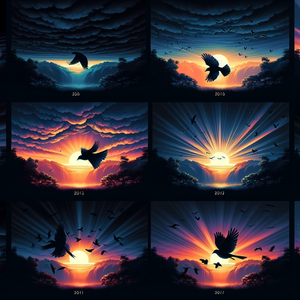Carpets as Cultural Storytellers

Carpets are, in essence, time capsules. They capture the essence of their origins, reflecting the environment, people, and traditions that brought them to life. For instance, the intricate floral designs of a Persian rug might evoke the ancient trade routes that carried exquisite materials and dyes across deserts and mountains, while the bold geometric patterns of a Turkish kilim might echo the nomadic tribes and their beliefs. Meanwhile, the textured simplicity of a Moroccan Berber carpet speaks to the rugged beauty of the Atlas Mountains, where its creators wove their daily lives into the fabric. To a regional carpet arranger, these elements are not just aesthetic choices but cultural markers. Each motif, dye, and weaving technique offers a glimpse into the past. For example, the use of indigo in a carpet’s design could hint at a region with access to natural indigo plants, such as parts of India or West Africa. Similarly, the presence of cochineal red—a dye derived from insects—reveals a labor-intensive process, often linked to regions like Central and South America. Arranging carpets by their origin becomes a process akin to solving a historical puzzle, where every thread and color contributes to a larger narrative.
Decoding Patterns and Symbols
One of the most fascinating aspects of carpets is their symbolic language. Across cultures, weavers have used patterns and motifs to communicate stories, beliefs, and traditions, often embedding complex meanings into deceptively simple designs. For the skilled carpet arranger, deciphering these symbols is an art form, requiring both technical knowledge and cultural awareness. Take, for example, the Tree of Life motif commonly found in Persian carpets. This symbol represents immortality and the connection between heaven and earth. In contrast, Anatolian carpets often feature diamond-shaped medallions that represent the evil eye, a protective symbol believed to ward off misfortune. Berber carpets, on the other hand, frequently showcase abstract patterns that reflect the spiritual and daily lives of the weavers, including symbols for fertility, protection, or even the landscape surrounding them. Understanding these patterns and their cultural significance is no small feat. It requires a keen eye for detail and an appreciation for the stories behind the designs. A regional carpet arranger must be able to distinguish between similar-looking patterns and identify their unique origins, weaving together an intricate map of cultural storytelling.
The Role of Geography in Carpet Design
Geography plays an integral role in shaping the design, materials, and techniques of carpets. The natural resources available in a region often determine the type of fibers and dyes used, while the environmental conditions influence the techniques and styles developed over time. For a regional carpet arranger, recognizing these geographic influences is crucial to understanding and categorizing each piece. For instance, carpets from the Caucasus Mountains are known for their thick, durable wool, sourced from sheep raised in high-altitude climates. These rugs are often bold in design, with geometric patterns that reflect the rugged terrain. In contrast, silk carpets from China are delicate and intricate, a testament to the fine silk produced along the ancient Silk Road. Similarly, Indian Mughal carpets, influenced by Persian artistry, feature elaborate floral motifs and a painterly quality, often reflecting the opulence of the Mughal Empire. By identifying these geographic and cultural ties, a regional carpet arranger transforms carpets into more than just decorative objects. They become artifacts, each with a unique story that connects the past to the present and bridges the gap between distant cultures.
Preserving Stories for Future Generations
In today’s world of mass production and globalization, the art of traditional carpet weaving faces the risk of being overshadowed or even lost. The stories embedded in these handmade pieces are at risk of fading into obscurity. Regional carpet arrangers play a vital role in preserving this cultural heritage. By meticulously identifying and categorizing carpets by their origins, they ensure that the historical and cultural significance of each piece is not forgotten. Modern technology has provided new tools to aid in this effort. Digital databases can track the provenance of a carpet, while artificial intelligence can analyze patterns and dyes to determine their origins with remarkable accuracy. However, no amount of technology can replace the human intuition and passion that a skilled carpet arranger brings to the task. It is their deep understanding of history, culture, and craftsmanship that breathes life into the stories these carpets tell.
Carpets are far more than functional objects or decorative items—they are woven legacies, carrying the stories of their creators, their regions, and their cultures. For a regional carpet arranger, each piece is an opportunity to uncover and share these stories, preserving them for future generations. From the symbolic motifs to the geographic influences and historical context, every carpet holds a wealth of information waiting to be decoded.
Textile Historian
Museums (e.g., The Metropolitan Museum of Art, British Museum), Universities or cultural heritage organizations, Independent research foundations
Key Responsibilities
Research and document the historical and cultural significance of textiles, including carpets, fabrics, and tapestries.
Analyze weaving techniques, dyes, and patterns to trace the origins and development of textile traditions.
Collaborate with museums, cultural institutions, and academic researchers to curate exhibitions or publications.
Required Skills & Experience
Advanced degree in history, anthropology, or textile studies.
Expertise in identifying traditional dyeing and weaving techniques across regions.
Strong writing and presentation skills to convey research findings to both academic and public audiences.
Artisan Liaison and Cultural Consultant
Sustainable fashion brands (e.g., Novica, Ten Thousand Villages), Non-profits supporting artisan communities (e.g., Aid to Artisans), International development organizations (e.g., UNESCO, World Fair Trade Organization)
Key Responsibilities
Act as a bridge between artisan communities (e.g., carpet weavers) and businesses or cultural organizations to promote traditional crafts.
Develop fair-trade initiatives or collaborative projects to support artisans and preserve cultural artistry.
Document and share the stories behind handmade creations to educate buyers and audiences.
Required Skills & Experience
Deep understanding of regional artisanal techniques, materials, and cultural contexts.
Strong communication and negotiation skills to work with both artisans and stakeholders.
Background in cultural anthropology or business development is a plus.
Museum Curator: Textiles and Decorative Arts
Art museums (e.g., Victoria and Albert Museum, Textile Museum of Canada), Cultural heritage organizations or private collections, Universities with textile research facilities
Key Responsibilities
Oversee the acquisition, preservation, and display of textile collections, including carpets, historical garments, and regional crafts.
Design exhibitions that highlight the cultural, geographic, and symbolic significance of textiles.
Conduct public lectures and write exhibition catalogs to educate visitors about the artifacts.
Required Skills & Experience
Advanced degree in art history, museum studies, or a related field.
Hands-on experience handling fragile textiles and understanding conservation techniques.
Curatorial experience with a focus on storytelling through artifacts.
Cultural Heritage Preservation Specialist
UNESCO or International Council on Monuments and Sites (ICOMOS), Regional cultural preservation agencies, Non-governmental organizations focused on heritage conservation
Key Responsibilities
Develop strategies to protect and restore endangered cultural artifacts, including carpets and other textiles, from decay or loss.
Work closely with local communities to document and safeguard intangible heritage, such as weaving techniques and symbolism.
Advocate for policies and funding to preserve traditional arts in the face of globalization and industrialization.
Required Skills & Experience
Expertise in conservation science and cultural anthropology.
Strong project management skills for coordinating with local governments, artisans, and NGOs.
Familiarity with modern preservation technologies, such as AI analysis for artifact restoration.
Symbolism and Design Analyst (Cultural Branding Specialist)
Luxury brands (e.g., Hermès, Gucci), Interior design firms specializing in globally inspired aesthetics, Consulting agencies focused on cultural branding
Key Responsibilities
Analyze cultural symbols, patterns, and motifs to inspire modern design projects in fields like interior design, fashion, or branding.
Work with brands to incorporate authentic cultural narratives into their products while respecting their origins.
Research and document the meanings behind patterns and imagery to provide cultural context for design.
Required Skills & Experience
Background in design, anthropology, or visual arts with a specialization in cultural symbolism.
Strong analytical skills to interpret patterns and their significance across different regions.
Experience working with creative industries, such as fashion houses or interior design firms.


